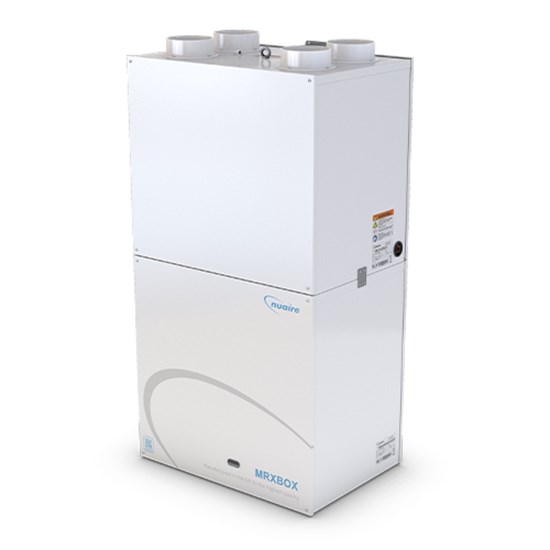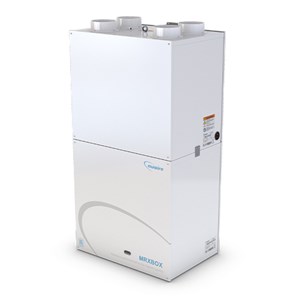
Mechanical Ventilation With Heat Recovery: Why It Needs Cooling
Adding cooling to MVHR seems an odd thing to do!
MVHR quite literally means Mechanical Ventilation with Heat Recovery. So, why would you want a MVHR unit to do the opposite? MVHR systems extract stale air from kitchens and bathrooms, recover the heat energy and return it to the dwelling through the supply air to living rooms and bedrooms. This makes homes more energy efficient, with reduced heating bills.
However, better sealed, and highly insulated new homes, especially apartments, have a tendency to overheat in summer months. Historically, overheating has been partly caused by the architectural trend for floor-to-ceiling glazing. Coupled with an energy efficiency requirement for hi-tech glass, that lets the sun’s heat energy in and traps it, further reducing the need for heating by providing free heat in winter. This free heat is added year-round, so unfortunately it adds to internal heat build-up in the summer.
Our MVHR units have a summer bypass option that helps reduce the heat build-up by bypassing the heat exchanger in the warmer months and supplying air at external temperature to keep the internal temperatures down. This only works when it is cooler outside than inside.
Climate change has led to increasing summer temperatures. The Met Office future climate predictions suggest the temperature of hot summer days could increase between 3.8°C to 6.8°C in future decades. This suggests we could see as much as a twenty-fold increase in the chance of hot weather warnings being issued, fuelling concerns about overheating.
Approved Document O
In 2022 a new building regulation, Approved Document O, was introduced. “O” representing ‘Overheating’ forces architects to design residential buildings differently. It limits the amount of glazing, increases the level of external solar shading, and doubles the number of openable windows required to pass building regulations. The aim is to reduce the unwanted solar heat which is gained and maximises ways of venting excess heat.
Building designers now must strike a difficult balance. Having enough glazing to meet daylight requirements, but not so much as to cause overheating. New apartment blocks in urban areas are often built next to busy roads and railway lines. This has an impact on how much, and when, windows can be opened, which has an influence on the effectiveness of naturally ventilating excess heat.
Planning conditions may dictate that occupants should not have to open their windows to prevent an internal heat build-up if there are risks associated with safety, security, noise, or environmental pollution.
The level of overheating can be predicted in a computerised model and if the dwelling is predicted to go over 26°C for more than 283 hours per year, then cooling may be the only solution.

Nuaire’s Solution to Overheating
Our MRXBOX Hybrid Cooling System (MR-ECO-COOL-V) is a simple, compact way of providing cooling that is becoming the go-to solution. Combining heat exchanger coolth recovery and DX cooling into one packaged system, the MRXBOX Hybrid Cooling System helps mitigate overheating in summer months.
Our MVHR systems already supply fresh air to living rooms and bedrooms that are the most likely to overheat. Integrating cooling into that fresh-air supply, makes for a very low impact and space efficient solution. Lowering the fresh air supply temperature can be shown in the model, so greatly reduces the risk of overheating.
Every new residential development must be assessed in accordance with Part O and many projects cannot pass the overheating assessment without cooling.


